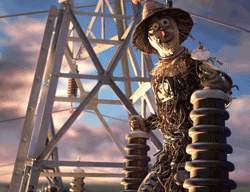We need energy – now what?
Energy and using it to improve work advantage has always been at the center of human advancement. Our tools must revolve around the current energy-producing technology and change when the source of energy changes. Although today we develop most of our energy from oil, to keep moving forward, we need to consider different sources of energy to perform work because oil will not always be available (especially as more countries become big energy consumers). Of course, we have many alternatives to choose from: hydrogen, wind, solar, biomass, and other possibilities. Even cold fusion, yes that cold fusion, is making ripples again in the pond of potential energy sources.

From where I sit, it looks like a combination of energy sources (renewable and non-renewable) will be needed to provide for the energy demands of the near future. And to help this along, a fortified infrastructure will be needed to transmit the power to the users via a smart electric grid. A policy research paper, written by Bracken Hendricks and published by the Center for American Progress Action Fund, entitled “Wired for Progress 2.0: Building a National Clean-Energy Smart Grid” offers some help for a direction to consider for the future of energy in the U.S.
Developing the infrastructure and the smart grid that will be able to distribute power from the wind and solar corridors to rest of the nation are essential to delivering on the promise of clean and renewable energy, Hendricks says. The electric grid delivers electricity from points of generation to consumers, and the electricity delivery network functions via two primary systems: transmission and distribution. The transmission system delivers electricity from power plants to distribution substations, while the distribution system delivers electricity from distribution substations to consumers. The grid also encompasses many local area networks that use distributed energy resources to serve local loads and/or to meet specific application requirements for remote power, district power, and critical loads protection.
Some think that the electrification of our transportation sector, which today accounts for nearly 70% of the total oil consumed by the U.S., will solve many of our energy as well as security issues. A recently released paper, “A National Strategy for Energy Security,” is a comprehensive set of solutions to the threats posed by our nation’s dependence on oil. It includes policy steps for enhancing the nation’s electricity transmission system in order to accommodate electrified short-haul transportation. For example, car companies are introducing experimental vehicles, such as the Chevy Volt. Maybe moving in a direction that supplies our energy needs from a wide base of sources that feeds into an amped-up electric grid will also allow for the efficiency gains that the semiconductor industry can continue to supply.
Paul O’Shea
Oil is
being drained from
existence and
we need
a new
way to
fuel our
energy plants and machines
Photo courtesy of GE
Advertisement
Learn more about Electronic Products Magazine





